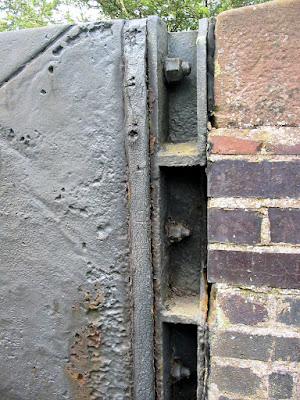Until recently I was an external examiner to Harper Adams University College. This allowed me time between examination boards to explore the disused canals around Newport (Shropshire). As an engineer I decided that I must visit the Longdon-on-Tern aquaduct which was constructed using the same techniques as at Pontcysllte (cast iron sections). It is considered by most to be where Telford tried out his ideas for his masterpiece.
Details of how it came to be constructed in 1796 are in Anthony Burton's book on Telford. Lots of details of the Shrewsbury Canal, of which the aqueduct is a part, are given in an excellent Wikipedia page.
As you can see from below, you can get realtively close to the bridge via a public footpath from the road.
View Larger Map
Here are some photographs I took back in the summer of 2006.

Longdon-on-Tern Aqueduct
The trough is not in currently in water although some mid 20th century photographs show it watered.


The trough - Longdon-on-Tern Aqueduct

The towing path - Longdon-on-Tern Aqueduct
Note that the towing path does not extend over the water trough as at Pontcysllte. There must have been considerable hydraulic resistance as well-loaded boats entered the trough.

Joints - Longdon-on-Tern Aqueduct
I was thrilled to walk along the trough. It was like examining in close-up all the items you can't see at Pontcysllte. Although far from being a spectacular engineering example, it is a very important structure and the idea of walking across what is the oldest large-scale cast iron aqueduct in the world still thrills me.
The aqueduct is Grade I listed, but where else but in Britain would such an important historical structure lie un-heralded across a field.
Steve Parkin